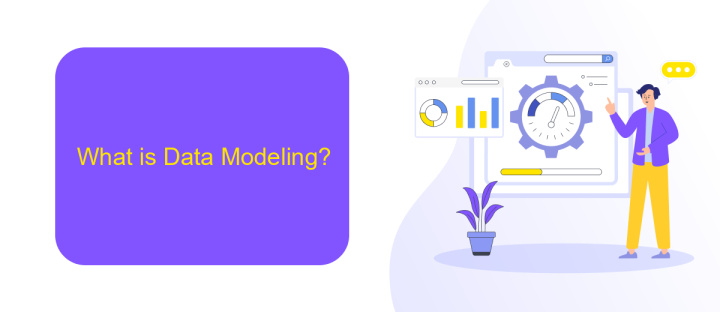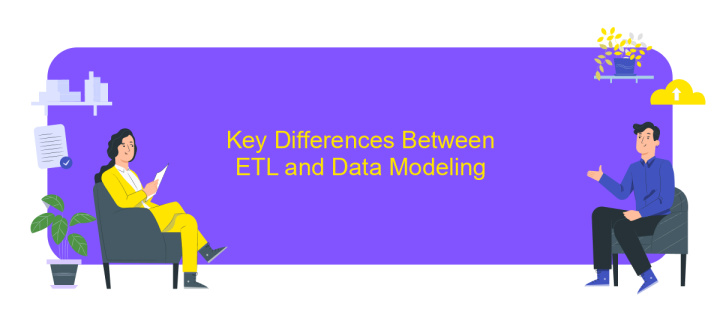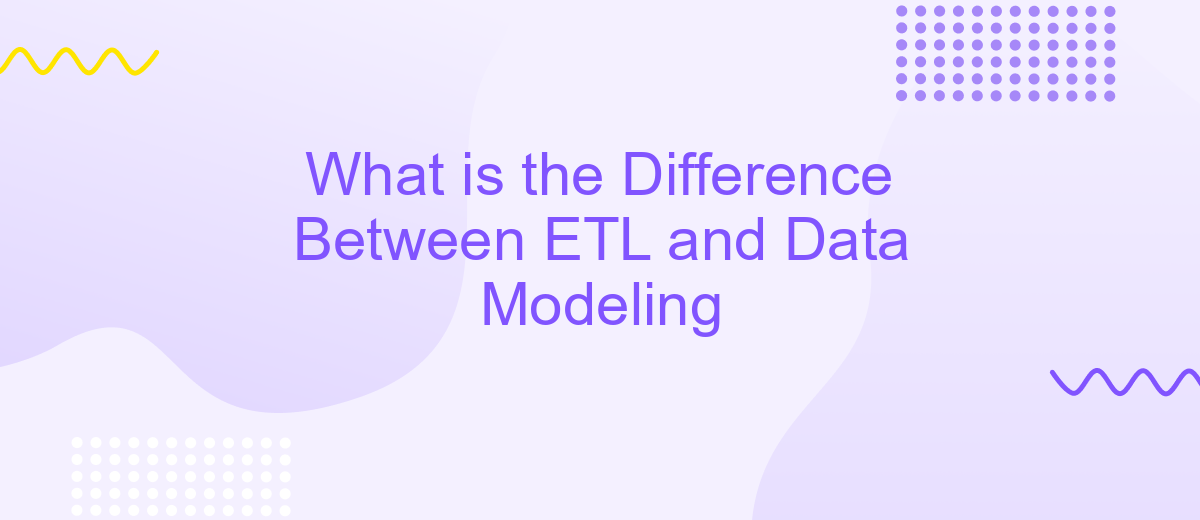What is the Difference Between ETL and Data Modeling
In the realm of data management, understanding the distinction between ETL (Extract, Transform, Load) and data modeling is crucial for optimizing data workflows and ensuring accurate analysis. While ETL focuses on the process of transferring and transforming data, data modeling involves designing the structure of that data. This article delves into the key differences and their respective roles in data management.
What is Data Extraction, Transformation, and Loading (ETL)?
Data Extraction, Transformation, and Loading (ETL) is a process used to collect data from various sources, transform it into a usable format, and load it into a database or data warehouse. This process is essential for integrating data from different systems and ensuring it is clean, consistent, and ready for analysis.
- Extraction: This step involves retrieving raw data from multiple sources such as databases, APIs, and flat files. The goal is to gather all relevant data for further processing.
- Transformation: In this phase, the extracted data is cleaned and transformed into a suitable format. This includes data cleansing, normalization, aggregation, and enrichment to ensure data quality and consistency.
- Loading: The final step involves loading the transformed data into a target system, such as a data warehouse or database, where it can be accessed for reporting and analysis.
ETL processes can be complex and time-consuming, but tools like ApiX-Drive can simplify integration tasks by automating data extraction and transformation from various sources. This service helps streamline ETL workflows, making it easier to manage and maintain data pipelines.
What is Data Modeling?

Data modeling is the process of creating a visual representation of a system or database to illustrate the relationships between different data elements and structures. It involves defining data types, relationships, and rules to ensure data consistency and integrity. Data models serve as blueprints for designing and managing databases, making it easier to understand complex data systems and improve data quality.
There are various types of data models, including conceptual, logical, and physical models. Conceptual models provide a high-level overview of the system, focusing on the main entities and their relationships. Logical models delve deeper into the specifics of data elements and their attributes, while physical models translate these designs into actual database structures. Effective data modeling is essential for successful data integration and analysis, ensuring that data is accurate, relevant, and accessible. Tools and services like ApiX-Drive can facilitate the integration of data from multiple sources, streamlining the process of data modeling and ensuring seamless data flow across systems.
Key Differences Between ETL and Data Modeling

ETL (Extract, Transform, Load) and Data Modeling are two critical processes in the data management lifecycle, each serving distinct purposes and functions. Understanding their key differences is essential for effective data strategy implementation.
- Purpose: ETL focuses on extracting data from various sources, transforming it into a suitable format, and loading it into a data warehouse. Data Modeling, on the other hand, involves designing the structure of a database, defining how data is stored, related, and accessed.
- Process: ETL is a procedural workflow that includes data extraction, transformation, and loading. Data Modeling is more about creating abstract representations and schemas for data organization.
- Tools: ETL processes utilize tools like Apache NiFi, Talend, and ApiX-Drive for integration and automation. Data Modeling employs tools such as ER/Studio, Oracle SQL Developer, and IBM InfoSphere Data Architect.
- Outcome: The outcome of ETL is a consolidated and clean data set ready for analysis. The outcome of Data Modeling is a well-structured database that supports efficient data retrieval and manipulation.
In summary, while ETL and Data Modeling are interconnected, they serve different roles within the data ecosystem. ETL prepares the data for use, whereas Data Modeling ensures that the data is logically and efficiently structured for long-term usability.
When to Use ETL vs. Data Modeling

ETL (Extract, Transform, Load) is ideal for scenarios where you need to consolidate data from multiple sources into a single, unified view. This process is particularly useful for data warehousing, reporting, and analytics, where data consistency and quality are paramount. ETL ensures that the data is cleansed, transformed, and loaded into the target system, making it ready for analysis.
Data modeling, on the other hand, is essential when you need to design the structure of a database or data warehouse. It helps in defining how data is stored, organized, and related to each other. This is crucial for creating efficient database systems that support complex queries and transactions.
- Use ETL when you need to integrate data from various sources.
- Use ETL for data cleansing and transformation tasks.
- Use data modeling to design database schemas.
- Use data modeling to optimize data storage and retrieval.
For seamless integration and automation of ETL processes, consider using services like ApiX-Drive. ApiX-Drive simplifies the process of connecting various data sources and automating data workflows, ensuring that your data is always up-to-date and accurate.
- Automate the work of an online store or landing
- Empower through integration
- Don't spend money on programmers and integrators
- Save time by automating routine tasks
Conclusion
In conclusion, understanding the differences between ETL (Extract, Transform, Load) and data modeling is crucial for effective data management. ETL processes focus on the efficient movement and transformation of data from various sources into a unified format, ready for analysis and reporting. In contrast, data modeling involves designing the structure and relationships of data within a database, ensuring data integrity and optimizing performance.
Both ETL and data modeling are essential components of a robust data strategy. While ETL ensures that data is accurately and efficiently processed, data modeling provides the blueprint for how data is stored and accessed. Tools like ApiX-Drive can streamline the integration process, automating data flows and enhancing overall efficiency. By leveraging these tools, organizations can achieve more accurate insights and make data-driven decisions with confidence.
FAQ
What is ETL?
What is Data Modeling?
How does ETL differ from Data Modeling?
Can ETL processes and Data Modeling be automated?
Why are ETL and Data Modeling important in data management?
Time is the most valuable resource for business today. Almost half of it is wasted on routine tasks. Your employees are constantly forced to perform monotonous tasks that are difficult to classify as important and specialized. You can leave everything as it is by hiring additional employees, or you can automate most of the business processes using the ApiX-Drive online connector to get rid of unnecessary time and money expenses once and for all. The choice is yours!


